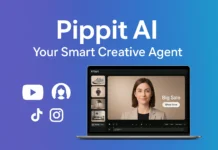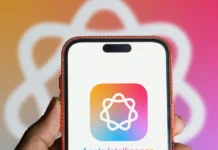Hold on tight! 2023 is already a wild ride in the world of web development! Technology is sprinting forward, and it’s taking the rules of the web with it.
We’re all feeling the ripple effects of big events like the COVID-19 pandemic, which has changed the way we use the internet. Whether you’re shopping for groceries, booking a trip, or even making a dentist appointment, everything’s going digital and becoming more interactive than ever.
So what’s causing all this buzz? These top 10 trends that you absolutely can’t afford to miss this year!

#1 Meta Frameworks
Let’s start with Meta Frameworks. You’re probably asking, “What in the world is a Meta Framework?” Think of it as a turbo-charged tool that makes life way easier for developers. It’s like a framework that works on top of other frameworks—like React or Angular—making them even more powerful.
It’s a game-changer, really. Meta Frameworks helps developers simplify complex projects by offering advanced tools and protocols. So, instead of juggling twenty things at once, they can focus on delivering quality. What does this mean for you? Faster, more efficient websites that can handle whatever 2023 throws at them.
Also Read- 10 Tech Trends To Expect In 2023, According To CES Report
#2 Progressive Web Apps (PWAs)
You may have heard of PWAs or Progressive Web Apps. They’re a big deal, and here’s why. Imagine an app that lives right in your browser—no need to download anything, but you still get that “app-like” experience. And guess what? The mobile sales market is on track to hit $8.1 billion by 2026.
This being said, PWAs aren’t just a cool feature—they’re really changing how we think about web apps. These apps work offline, and they’re faster to develop than traditional apps. So if you’re in a subway tunnel or in the middle of nowhere, you can still access the information you need. It’s like having your cake and eating it too!
PWAs can significantly improve user engagement and have already been adopted by big names like Starbucks and Uber. If you aren’t quite aware of how to integrate these and upscale your business, contact this Atlanta web design company—they have a star-shining record!
#3 Augmented Reality (WebAR)
According to Statista, the global market for AR, VR, and MR technologies is set to skyrocket from around $28 billion to an astonishing $250 billion by 2028.
It’s obvious that WebAR is fundamentally transforming the user experience by adding a layer of digital interaction to the real world, and this engages and provokes potential customers, and has astonishing turnover rates!
For example, companies like IKEA allow you to visualize furniture in your own living space before making a purchase. Amazon’s AR View does something similar, providing a much more interactive and enriched online shopping experience, whether it’s the size of the clothes or the material of your new home appliance.
#4 Dark Mode UX
Alright, let’s talk about something we’ve all secretly—or not-so-secretly—been loving: Dark Mode. If you think it’s just about giving your screen that sleek look, think again! Dark Mode is skyrocketing in popularity because it’s not just cool—it’s super practical.
Why? First up, it’s a godsend for our eyes. Ever tried reading something on your phone late at night and felt like you were staring into the sun? Well, Dark Mode helps ease that by reducing eye strain.
But it doesn’t stop there. If you’ve got an OLED screen, Dark Mode can actually help save some of that precious battery life.
#5 AI Assistants and Voice Search
Remember when talking to your gadgets was the stuff of science fiction? Well, it’s pretty much our reality now. Alexa, Siri, and Google Assistant are not just fun names we know, but they’ve settled into our daily routines. Voice search isn’t just a quirky feature; it’s rapidly becoming a game-changer in how we engage with the digital world.
Think about it: saying, “Hey Siri, where’s the nearest pizza place?” is a lot more convenient than typing it out, right? Beyond ease of use, it also opens up new avenues for businesses. With voice commands, you can gather rich, nuanced data to personalize user experiences even more.
Also Read- Top Digital Marketing Trends To Adopt In 2023
#6 Motion UI
You know how we’re always glued to our phones these days? Well, with mobile browsing having taken over the desktop ages ago, it’s a wake-up call for web developers. The era of static, dull web pages is over. In a world where you have about 10 seconds (or less) to grab someone’s attention, Motion UI is stepping up to the plate.
It’s not just about looking good, but also, about captivating your audience quickly. As mobile tech keeps getting better, expect Motion UI to push the boundaries of what’s possible on that small screen.
#7 JavaScript Frameworks
Alright, let’s talk JavaScript frameworks, the heavy lifters of modern web development. If you’re building anything dynamic and interactive online, chances are you’re using one of the big names like React, Angular, or Vue. These frameworks are pretty much essential now, especially as real-time data exchange and interactive UI elements have become the bread and butter of today’s web experience.
But here’s the cool part. These frameworks are always getting better.
Regular updates bring in fresh features and optimizations, ensuring they stay ahead in the web development game. In a field that’s always changing, these frameworks offer a bit of consistency, allowing developers to keep up with demands for more complex and interactive web solutions.
Also Read- Top Digital Marketing Trends To Adopt In 2022
#8 Personalization of Content with Machine Learning
Personalization is no longer just a nice-to-have; it’s become a deal-breaker for a lot of people. Twilio’s 2022 report highlights that an astonishing 62% of consumers will ditch a brand if they don’t get a personalized experience.
And what’s driving this wave of hyper-personalization? Machine learning.
Companies like Alibaba and Netflix are already using machine learning to understand what you like and don’t like. Whether you’re shopping for new kicks or choosing a movie for the night, machine learning algorithms are working in the background.
They’re learning from your clicks, your cart additions, and even your pauses. As they collect more data, they get smarter, making your next visit even more tailored to your interests.
#9 Internet of Things (IoT)
Now, the Internet of Things, or IoT, isn’t just tech jargon that’s thrown around. According to Statista, we’re looking at over 29 billion IoT-connected devices by 2030. That’s massive and has a big impact on web development. Imagine your smart fridge communicating with your favorite recipe blog, suggesting dishes based on what’s inside.
Sounds futuristic? It’s closer than you think.
So, you might want to get used to your web interfaces talking to your coffee machines, your cars, or even your smartphones.
#10 Enhanced Cybersecurity and Data Compliance

As cyber threats advance in sophistication, cybersecurity measures must evolve to match. In an age where data breaches are increasingly common, robust cybersecurity is not just advisable but mandatory.
Compliance with regulations like GDPR and CCPA is now a standard requirement, and adhering to these can result in hefty fines and a loss of consumer trust. Cybersecurity is no longer just a feature but a necessary component for the survival of any online venture.
Summary
As we progress through 2023, these trends are setting the standard for what’s to come in web development. Are you prepared for these seismic shifts? Or have you already grown fond and keen, not even realizing they’re “the future”, but a true part of your everyday?
Stay ahead of the curve by adopting these trends and adapting to the rapidly evolving digital landscape, whether you’re a business, an entrepreneur, or just a client.






































